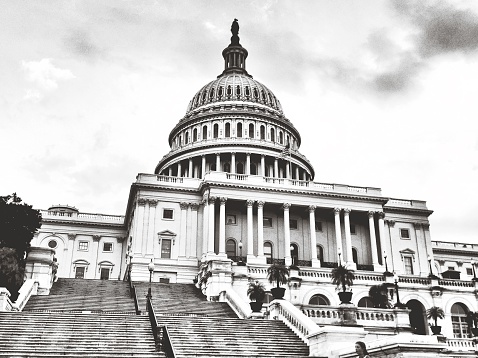Isobel Crawley: “What else could we drink to? We’re going forward into the future, not back into the past.”
Dowager Countess: “If only we had the choice.”
— The last lines spoken in the hit series, Downton Abbey
The most provocative theme coming out of some in Congress, related to repeal-and-replace of the Affordable Care Act (ACA), is the notion that employees and retirees should begin paying income taxes on their employment-related health insurance.
That would be a sea change in the employee benefits world, and not a welcome one, because it would threaten disruption of a group health insurance market currently benefiting more than half of all Americans.
Don’t expect this change to be obvious, if it comes. Proponents of the tax plan will disguise the event, and the tax hit – when it arrives – will be gentle at first, but will grow over time. In the end, the result will be a tax increase on many workers, retirees and their families. “Like your plan and want to keep it?” Well, you may have to pay more taxes in order to keep it, if the plan is even offered at all.
What All the Fuss is About: The Income Tax Exclusion
For many decades employees and retirees have enjoyed their employment-based group health insurance as a nontaxable fringe benefit. Because the value of employment-based health insurance is not included in employees’ and retirees’ taxable income, employment-based health insurance is said to enjoy an “income tax exclusion.”
The value of that benefit – expressed as the taxes employees and retirees would have otherwise had to pay on their insurance – has grown over the years, as health plan costs have increased. The ACA’s so-called Cadillac tax would have taken the first large bite out of the tax advantages of employment-based health insurance. The Cadillac tax would have directly or indirectly taxed employers, unions and other plan sponsors on a portion of the cost of the health insurance supplied to the plans’ enrollees, once those costs exceeded certain thresholds. By 2020, when the Cadillac tax is set to take effect, those thresholds would be around $11,000 for self-only coverage and about $29,000 for family coverage.
But if the Cadillac tax is repealed with much of the rest of the ACA, as Congress says it intends to do, what happens to the revenue hole the tax was designed to fill? One way to fill it, of course, is with another tax.
A Little Sleight of Hand and an (Initially) Gentle Tug on the Pocketbook
 Proponents of the “let’s tax employees and retirees on their health insurance” concept are advocating a two-step process to replace the Cadillac tax. The two-step process partly disguises the end game. Like the proverbial frog in the pot of water beneath which the heat is slowly turned up, the tax pain will be hardly noticeable at first. But before long the tax hit will be at a hard boil for many workers and retirees.
Proponents of the “let’s tax employees and retirees on their health insurance” concept are advocating a two-step process to replace the Cadillac tax. The two-step process partly disguises the end game. Like the proverbial frog in the pot of water beneath which the heat is slowly turned up, the tax pain will be hardly noticeable at first. But before long the tax hit will be at a hard boil for many workers and retirees.
Step 1 of the plan would be to place Cadillac tax-looking thresholds on the value of employment-based health insurance, with a major difference: It won’t be plan sponsors who will owe tax on premium costs in excess of these thresholds. It will be employees and retirees who will owe income tax on the excess. Depending on how the tax is structured, employees and their employers might also owe additional payroll taxes on those amounts.
This change could be included in an ACA repeal (and partial replacement) bill that Republicans can push through the Congress via the budget reconciliation process, meaning they’ll only need a simple majority vote in the Senate to get it done.
Because the initial tax trigger thresholds are likely to be set quite high, perhaps as high as the Cadillac tax thresholds, the initial impact will be minor. Many employment-related health plans do not yet have per-employee or per-family costs quite high…yet. Hence a fundamental shift in tax treatment for employment-based insurance comes online with little fanfare and relatively little tax pain.
But watch for the tax-triggering thresholds to be indexed, as were the Cadillac tax thresholds, at a rate well below the rate of health insurance inflation. As a result, a great many health plans will trigger the tax for their enrollees over the next several years.
Step 2 continues the theme of delayed pain. In step 2 Congress begins – probably as part of a broader tax reform effort – ratcheting down the tax trigger thresholds, subjecting more and more employees and retirees to the trigger, and increasing the amount on which they will owe tax. But the pain may be mitigated for a short while with reductions in individual tax rates. The real tax pain comes later, as health insurance inflation continues to outpace the inflationary adjustment to the tax trigger thresholds, and the tax impact on health insurance grows.
Tax Equity?
Look for the fundamental change in tax treatment of employment-based health insurance to be couched in terms of “tax equity.” Here’s the argument: Employees and retirees who get insurance through an employer or union currently receive tax-free coverage, but those who don’t must buy their health insurance with after-tax dollars and only get to deduct on their tax returns a portion of the expense.
One solution might be to let the latter group deduct 100 percent of their premiums, the way self-employed individuals do. Others argue that the current nontaxable nature of employment-based coverage makes sense because it provides an incentive to work, if the employer offers a health plan.
But the banner of “tax equity” is just Washington spin. This is really less about tax equity than it is about grabbing additional tax revenue, and a lot of it, longer term.
The problems with this approach are obvious: Employers employing older and sicker workers pay higher premiums, making it far more likely those employees will be the first to bear the brunt of the tax. So much for equity, right?
Similarly hit would be employees, young or old, in areas of the country where insurance costs more because healthcare costs more. Or employees in high risk professions (because health insurance cost follows risk). Or employees, again whether young or old, of employers offering generous benefits because they want to reward their employees. Or pre-Medicare retirees fortunate enough to have employment-based retiree health insurance.
As the income tax hit on workers grows, some employees – most likely the youngest and healthiest – are likely to reassess whether to buy insurance at all (the ACA’s individual mandate would be gone, of course). If they drift away from employer group plans even in modest numbers, the risk profile of those plans changes for the worse: fewer younger, healthier employees to offset the risk posed by older and sicker workers. The potential result for those group plans is the same “adverse selection” firestorm engulfing the individual market today.
And therein lies an unfortunate but serious irony: While the main focus of efforts to address the ACA’s problems should be focused on the deteriorating individual health insurance market, the broader restructuring of tax rules for employment-based insurance ends up disrupting a group market ten times the individual market’s size.
First, Do No Harm
Congress must take care, in addressing the ACA’s problems, to do no harm to a group market functioning fairly well, easily far better than the individual market (claims cost trend in the individual market over the last five years is five times the trend in the group market).
Congress must think through the consequences of its actions related to the ACA. It must act in accordance with sound insurance principles, that is, sound risk shifting principles. And wholesale tinkering with a health insurance tax structure that currently benefits over half of all Americans reflects, to this Washington outsider, hubris if not outright political folly. Disrupting Americans’ health insurance never, ever ends well for the political party pulling the trigger.
